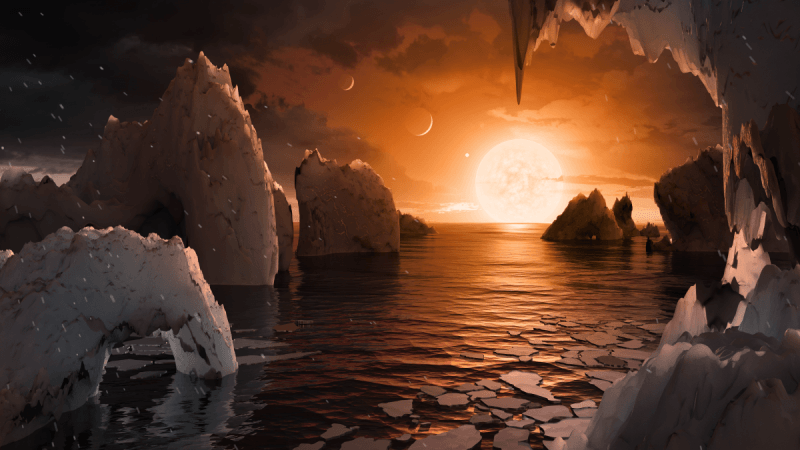
Seven Earth-sized planets that orbit a red dwarf star some 39 light years away may have too much liquid water or ice to be able to support life, astronomers say.
All seven planets that orbit the low-mass, cool Trappist-1 star are rocky worlds that are thought to have liquid water on the surface, making them prime candidates in the search for alien life.
However, researchers at Arizona State University and Vanderbilt University say all of the planets likely have too much water compared to Earth to host life.
Using a new computer model that takes into account all of the available information about the Trappist-1 system, including the chemical composition of the star, astronomers found that water likely makes up more than half the mass of the outer planets in the system.
The relatively drier inner planets are estimated to be composed of 15 percent of water by mass. For comparison, water only makes up a miniscule 0.02% of Earth's mass.
"We typically think having liquid water on a planet as a way to start life, since life, as we know it on Earth, is composed mostly of water and requires it to live," said Natalie Hinkel of Vanderbilt University.
"However, a planet that is a water world, or one that doesn't have any surface above the water, does not have the important geochemical or elemental cycles that are absolutely necessary for life."
There are other obstacles to life arising in the Trappist-1 system, in which all seven exoplanets are packed in a tight orbit around the dim star.
The nearest planets to Trappist-1 are believed to be tidally locked to the star, meaning that they always show the same face to the star. This could lead to one side of the planet being permanently hot and the other side permanently cold.
Red dwarf stars such as Trappist-1 are also prone to emitting a lot of high-energy radiation through stellar flares, penetrating the surface of nearby planets and wiping out any existing life forms.
The latest findings on the Trappist-1 exoplanets are detailed in the journal Nature Astronomy.

















